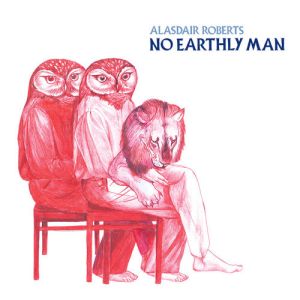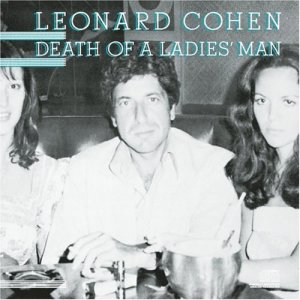 In the same way The Beatles have never been new to many, Richard Thompson has never been new to me. My first explicit memory of him being the inner sleeve of Amnesia which showed Thompson holding a chainsaw like a guitar he was about to strike, my father convincing me to pay attention to the music because, “Look, it’s Sooty’s dad!”. A household love for (and I must qualify this) a certain era Fairport had manifested itself in Thompson albums being picked up as they were released. As a result his work and style has become a bench mark for much of what I hear, I find myself seeking the same levels of skill deftly delivered, the same emotional commitment, the same ability to build on the familiar, the feeling that this should be a standard by which all others are judged.
In the same way The Beatles have never been new to many, Richard Thompson has never been new to me. My first explicit memory of him being the inner sleeve of Amnesia which showed Thompson holding a chainsaw like a guitar he was about to strike, my father convincing me to pay attention to the music because, “Look, it’s Sooty’s dad!”. A household love for (and I must qualify this) a certain era Fairport had manifested itself in Thompson albums being picked up as they were released. As a result his work and style has become a bench mark for much of what I hear, I find myself seeking the same levels of skill deftly delivered, the same emotional commitment, the same ability to build on the familiar, the feeling that this should be a standard by which all others are judged.
Even when done so loosely Thompson’s acoustic and electric folk have never been aptly titled. Fairport were too new and electric to be ‘proper’ folk and his electric work is best categorized loosely as Adult Orientated Rock, mixed with the descriptor singer/song-writer and most should know exactly what to expect and probably avoid e.g. Mark Knofler and Sting, but with RT it is slightly skewered in comparison to his peers. This is in no small part to his uniquely low vocal timbre and inventive and technical guitar work (Thompson is one of the few ‘players’ of whom a guitar solo is worth listening to and often uses fills of such ingenuity they make me laugh out loud like Jeremy Brett as Sherlock Holmes). This album seemed to drive any existing schism yet further, spread over two shorts discs titled ‘Voltage Enhanced’ and ‘Nude’, one of electric and one acoustic. Each disc sees him firmly entrenched in the forms of his albeit not too dissimilar chosen areas, they also stand out as some of his angrier works, as if he’d finally caught up with my house in wondering how he could be this good yet Springsteen is the one playing arenas, he was showing off, “I can do all this and it’s easy”.
‘Voltage Enhanced’ is a warm fuzz of tones, bass is in that nice area where pitch almost becomes obsolete, drums a little fizzed and driven from that compression, the ambience is genuinely of a band in a room, a similar feel that of Rage Against The Machine’s Evil Empire. Guitars are as expected, by now you trust Thompson is fully at ease with his instruments and their paraphernalia, they are tasteful yet twisted both in sound and style. This instills his playing with a confidence matched in his vocals. ‘She Steers By Lightning’ sees his vocals twinned with the heavily fuzzed guitar lead line, large tonal leaps make a ploy previously used by Hendrix all the more radical coming from this 40 something beret wearing singer/song writer folkie, it erupts into the solo that never was before returning to the familiar yet no more comfortable verse. ‘Business on You’ sees him toy with his folk past; imagine Cake with a mandolin player. ‘No’s Not a Word’ is this disc’s spun out centre point, a twist on the unrequited love song, each one-sided vow of the verses are followed by convulsing guitar lick of dissonant passion, calling to mind ‘Paranoid Android’ era Greenwood.
‘Razor Dance’ and ‘Hide It Away’ share the honour of featuring on both discs. While the ascending/descending bass line is the focal point of both versions of ‘Razor Dance’ the guitar is swung more in the acoustic version, losing its intense push pull catch up, instead revealing a tender inevitability in post-romantic rumour, ‘After the death of a thousand kisses/ comes the catacomb of tongues’, while the electric version is delivered in such a way that he is intent to correct the account of events while the acoustic version seems to predict them occurring. ‘Hide It Away’ is simply a good song sang two ways. Many a b-side has been filled with a straight acoustic version recorded for nowt as a favour to cover a lack of songs this appearing on both sides of this album stands as evidence of either RT’s ability as a songsmith or as a recording artist, or more likely, both.
While his vocal deliver is never anything but the centre of the ‘Voltage Enhanced’ side, ‘Nude’ sees them dressed completely differently. Lyrically this disc shines, while in the context of his singing Thompson’s choice of words is always nothing less than exactly what was meant to be said, they can sometimes lack the satisfaction in quotation when bereft of music that you do with say, your regular neighbourhood Morrissey, this disc contains its fair share of worthy contenders, ‘She Cut Off Her Long Silken Hair’ draws attention to itself with “By the light of the moon Her dress slipped to the ground Then she knelt like Saint Joan And invisible armies attended her there”. Obviously a simple guitar and voice based album will see the f-word bandied about with ease, but this obviously is, (‘Woods of Darney’ definitely is, a [seemingly] 31 verse period tale of romance, betrayal, war and ultimately death) but it is folk in the same way as its heavier electric sibling is rock, there’s simply not another title broad enough. It is folk, he is a singer/songwriter, but it is brilliant for succeeding in the space where every other folk singer/songwriter normally safely curls up with a tale only as hackneyed as their chord progression.



